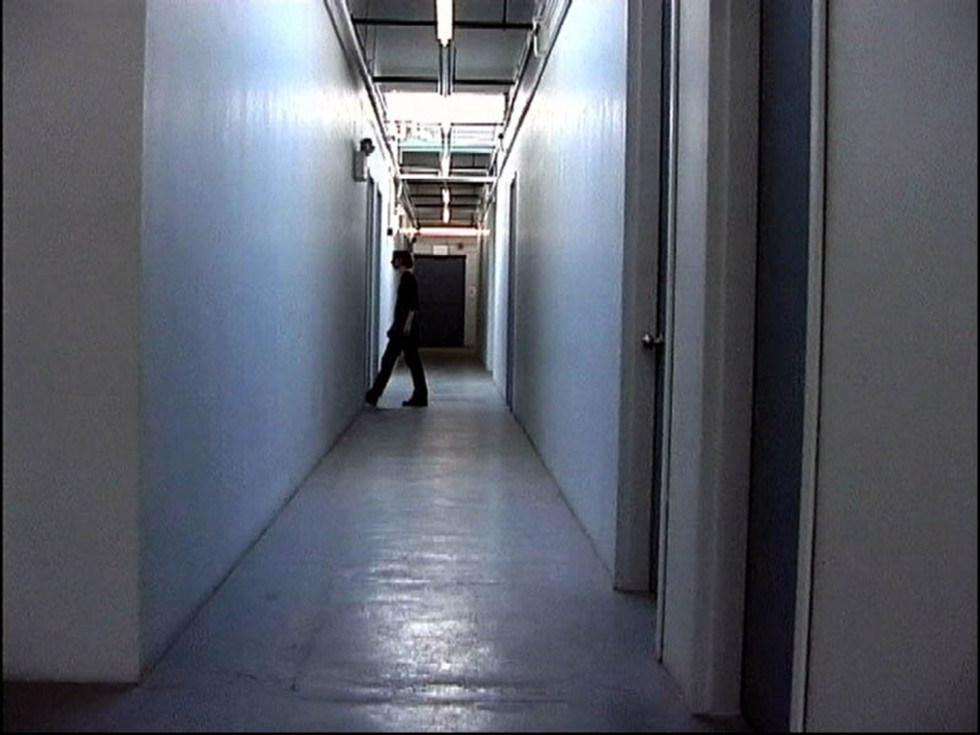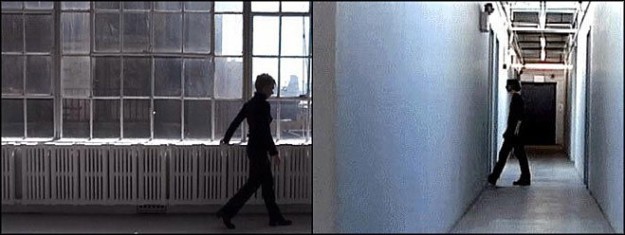
Ann Lislegaard, The Double Room, 1999 © Ann Lislegaard
MMP: Ann Lislegaard
4.6 1999 – 15.8 1999
Stockholm
The post-minimalist installations of Ann Lislegaard (born in 1962, lives in Copenhagen and New York) are based on all-encompassing physical experiences. She likes to work with the underlying vibrations of the space or site. Using among other things, manipulated voices, fluorescent lights and reflective (mirror) surfaces, she creates paranoidal situations. in the video installation “Nothing but space” it appears that even the most stable of things – the floor, walls, ceiling – can give way: one´s very sense of self becomes shaky.
In the installation that Ann Lislegaard (born 1962, lives in Copenhagen and New York) has prepared for Prästgården as part of Moderna Museet Projekt, she experiments with several of the elements that we use every day in order to orient ourselves in space: sound, light and image. She has built an architectonic construction in the Assembly Room, in which the visitor is invited to move between open and closed spaces, between the confined and the infinite, the physically literal and the imaginary. This installation which is called “The Double Room” contains, among other things, a large video projection which she has produced in New York.
As the digital world becomes more insistent on our attention, so does the interest in concrete, physical experience. Ann Lislegaard’s post-minimal installations place the visitor in the centre; they often are based on all-encompassing physical experiences, which, while enhancing the feeling of being present, also challenge visitors’ preconceived opinions about the character of space and experience of control. She also likes to allude to the underlying atmosphere and meaning of a particular space or site. By using altered voices, fluorescent lights and
reflective surfaces, she brings these underlying elements to the surface and creates situations which seem both enticing and paranoid. In these one can have the experience of being in between direct perception and mental experience. In the video installation, “Nothing but space”, even the most stable of things – the floor, walls and ceiling – seem to give way, and our very sense of ourselves becomes shaky.
As Henri Lefebre pointed out in his book “The Production of Space” (1974), space is more of a subjective creation than a mathematical continuum: it is an effect of the meeting between body and soul, reality and fiction, inside and outside. The experience of Ann Lislegaard’s work could recall the feeling of walking in the middle of a crowded street in a metropolis and letting oneself be carried along by events, or of wandering alone in a dark forest and dreaming; or of seeing a really good film: they all offer a kind of transference, a temporary trip into another state.
Ann Lislegaard has recently participated in the group exhibition ‘Conceptual Art as Neurobiological Praxis’ at Thread Waxing Gallery, New York.
Curator: Maria Lind
Moderna Museet Project
Moderna Museet Project is an activity of the Moderna Museet in Stockholm. Artists are commissioned to make new work for the temporary project space in the Old Vicarage next to the museum on Skeppsholmen, for other situations and environments in the city of Stockholm or elsewhere.

